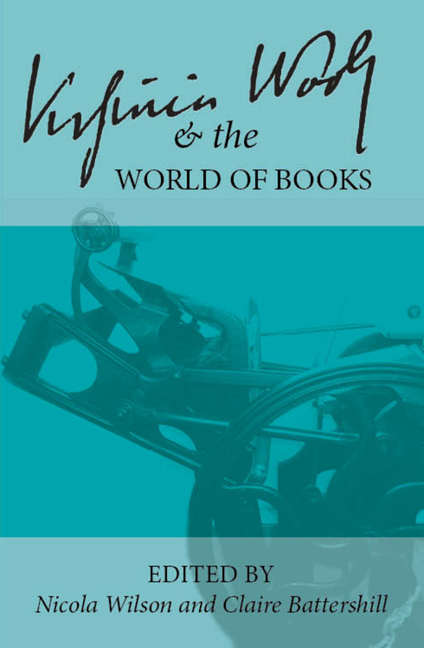 Virginia Woolf and the World of Books
Virginia Woolf and the World of Books Book contents
- Frontmatter
- Contents
- Introduction
- List of Abbreviations
- Keynote
- In the Archives
- Craftsmanship
- The Hogarth Press
- “obscure, indecent and brilliant”: Female sexuality, the Hogarth Press, and Hope Mirrlees
- After the Deluge, The Waves
- Alternative Histories: Hogarth Press's World-Makers and World-Shakers Series
- The Hogarth Press, a Singular Art Gallery
- Hours in A Library
- The Art of the Book
- The Art of the Narrative
- Making New Books: Creative Approaches
- The Book in the World: Woolf's Global Reception
- Editing and Teaching Woolf
- Intertextuality
- Lives in Writing
- Notes on Contributors
“obscure, indecent and brilliant”: Female sexuality, the Hogarth Press, and Hope Mirrlees
from The Hogarth Press
- Frontmatter
- Contents
- Introduction
- List of Abbreviations
- Keynote
- In the Archives
- Craftsmanship
- The Hogarth Press
- “obscure, indecent and brilliant”: Female sexuality, the Hogarth Press, and Hope Mirrlees
- After the Deluge, The Waves
- Alternative Histories: Hogarth Press's World-Makers and World-Shakers Series
- The Hogarth Press, a Singular Art Gallery
- Hours in A Library
- The Art of the Book
- The Art of the Narrative
- Making New Books: Creative Approaches
- The Book in the World: Woolf's Global Reception
- Editing and Teaching Woolf
- Intertextuality
- Lives in Writing
- Notes on Contributors
Summary
Published by the Hogarth Press in May 1920, Hope Mirrlees's dazzlingly modern and (until very recently) criminally disregarded Paris: A Poem presented a considerable challenge to its editor and typesetter, Virginia Woolf. The poem, described by Woolf as “obscure, indecent and brilliant,” with its complex topography and varied fonts and fragments, was only the fifth text that Woolf typeset herself (L2 384). Whilst Mirrlees's masterwork has received a resurgent critical interest, thanks largely to the editorial work of Sandeep Parmar and other scholars, including Julia Briggs, there is still much to be explored as to how Woolf's work can be read in dialogue with a text like Paris. Woolf's work as a typesetter influenced her views on form within her own composition. As Helen Southworth argues, learning the skills of arranging text for print “represented an apprenticeship in the relationship of word to textual space that critics see as having had a profound effect on Woolf's own Modernist form” (Southworth 146). Traces of Woolf's developing modernist form can be seen in her handling of Mirrlees's poem. Paris offers a kind of primer on the playful possibilities offered by experimenting with formal conventions and traditional models of femininity.
The poem itself, set across the span of a single day in post-First World War Paris, charts the wanderings of an explicitly female narrative voice. The geography of Paris “ZIGZAG[S]” from Nord to Sud, right to Left Bank, ending after the hour of “Alchemy, Abysnthe and Algerian tobacco” in Montmartre (Mirrlees 3, 16). The revolutionary uses of and experimentations in form present in Mirrlees's poem and its Sapphic explorations of female sexuality are mapped onto the city. The poem shares in some of Woolf 's own project in examining space, sexuality, and secrecy through her formal innovations as a writer. This paper explores the rich and radical ways in which Mirrlees's poem engages in new kinds of modernist form (similarly explored later by T. S Eliot in The Waste Land) and gestures towards Woolf 's dialogue with them in her own works. Paris is such a dizzingly complex and layered poem, that here I merely endeavor to chart some of the impressions it offers up to its reader and consider how these may have registered for its typesetter, Virginia Woolf.
- Type
- Chapter
- Information
- Virginia Woolf and the World of BooksSelected Papers from the Twenty-seventh Annual International Conference on Virginia Woolf, pp. 70 - 75Publisher: Liverpool University PressPrint publication year: 2018
